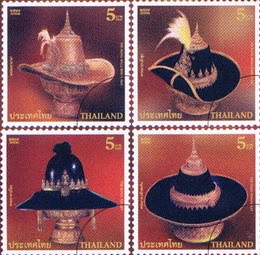An Overview of Stamp Collecting by Glenn Cutforth
Most people who become stamp collectors start out just for fun. Generally, those who take up stamp collecting as a hobby won't make a lot of money at it unless they really know their stuff, and are willing to invest in rare and unusual stamps. The first stamp was issued in 1840 and featured a picture of Queen Victoria. It didn't take long for people to become collectors and it remains, to this day, one of the most popular hobbies in the world!
Though stamps seem to some like practical bits of paper made only to transport mail to and fro, the stamp actually has much more meaning. You can trace historical happenings involving famous people and even entire countries. Great artists are celebrated on stamps, as well as people who've made a huge contribution to the world. Some stamps feature pop culture icons, while others trace the lives of animals living and extinct. Stamps also say a lot about the world we live in so it's understandable why so many are intrigued by collecting them.
You can literally get your hands on thousands of stamps for only a few dollars when you're starting out sine dealers sell international blends of stamps for very little. Companies and government offices often sell stamps from incoming mail in bulk at very good prices. This is called kilo ware, if you want to look into it. This is the best way to start. Get whatever you can, for as little money as possible. Spread the word about your stamp collecting hobby! You'll be surprised at what people you know will send you.
You may want to purchase some storage in order to keep your stamps safe and protected, as well as organized. Stamp albums, extra plastic sheets and glassine envelopes are a good place to start. Little stamp tongs will help you handle these delicate treasures, without getting them oily or dirty.
Keep your stored stamps at room temperature and away from heat and sunlight. Go through your amassed collection and start to break them down into desired categories. By country is a good place to start. Do you have a computer? Try keeping a record of them in your document file. Later, you may want to purchase special software to make the job easier.
When you remove stamps from envelopes, start by cutting delicately around the stamp. Don't cut the perforation! Get a shallow glass baking pan and fill it with body temperature water. Not hot or even warm! Place your stamps in and soak for about 15 minutes. You'll want to gently wipe the glue from the backs of the stamps and maybe soak them again for a few minutes in another dish of the same temperature water. You then place them face up on a tea towel or the like until they dry. Once dry, place them between two sheets of white paper, or paper towel inside a heavy book until flattened. Don't use tongs when your stamps are wet to avoid tearing.
If you join a local stamp club, you'll be alerted of any trade shows or auctions coming to your area. Stay connected with other collectors and you'll be more informed. Once you learn more and your confidence increases, you may even want to start your own business! You could host a website or open a small shop, or have a weekend booth at a flea market -- the possibilities are many!
By taking the proper steps, and having fun along the way, you'll learn to love what stamp collecting has to offer, and what you have to offer it!
Home: แสตมป์ไทย Thai Stamps
31 July 2007
An Overview of Stamp Collecting
Subscribe to:
Post Comments (Atom)
ไปรษณียากรไทย แสมป์ไทย ล่าสุด
แสตมป์ไทย แบบต่าง ๆ
- แสตมป์ 100 ปี พุทธทาส
- แสตมป์กรุงเทพฯ เมืองแฟชั่น
- แสตมป์กล้วยไม้
- แสตมป์การเขียนจดหมาย
- แสตมป์ความร่วมมือไทย - สวีเดน
- แสตมป์ความร่วมมือไทย - อิตาลี
- แสตมป์คุณทองแดง
- แสตมป์งานกาชาด
- แสตมป์ชีวิตใต้ทะเล
- แสตมป์ชุดปีใหม่
- แสตมป์ดอกกุหลาบ
- แสตมป์ที่ระลึก
- แสตมป์ที่ระลึก 100 ปี สยามสมาคมในพระบรมราชูปถัมภ์
- แสตมป์ที่ระลึก 30ปี ความสัมพันธ์ทางการทูตไทย-จีน
- แสตมป์ที่ระลึกงานแสดงตราไปรษณียากรแห่งชาติ
- แสตมป์นักษัตรประจำปี
- แสตมป์พระราชวัง
- แสตมป์พระเครื่อง
- แสตมป์วันพุทธศาสนา
- แสตมป์วันสงกรานต์
- แสตมป์วันสำคัญทางพุทธศาสนา
- แสตมป์วันสื่อสารแห่งชาติ
- แสตมป์วันเด็ก
- แสตมป์อนุรักษ์มรดกไทย
- แสตมป์เรือพระที่นั่ง
แสตมป์ไทย อดีต-ปัจจุบัน
คนคิดแปลก มองมุมต่าง
Copyright © 2009 แสตมป์ไทย | Fresh Themes Gallery | NdyTeeN. All Rights Reserved. Powered by Blogger and Distributed by Blogtemplate4u .


COMMENTS :
0 comments to “An Overview of Stamp Collecting”
Post a Comment